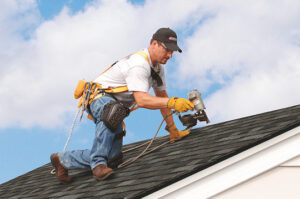Nothing ruins the impression of a room or patio quite like dirty windows. Thankfully, there are some great tips for cleaning windows to leave them sparkling clean.

Start by removing any screens or shutters from the window. Wipe down the frames and grids first, using a dry cloth. If you have mineral deposits on your windows, use a commercial cleanser. Visit Website to learn more.
Whether they are wood, vinyl or painted, window frames collect dust and debris that can make them appear dull and unattractive. Incorporate regular cleaning of the frames into your window-cleaning routine to prevent buildup and extend their life. With minimal time and effort, you can maintain the beauty and functionality of your window frames.
Prior to washing your windows, start by removing any loose dirt particles using a vacuum cleaner with a brush attachment or a soft-bristled scrub brush and a damp cloth. A light sanding of the frames with 60- to 80-grit sandpaper can also help smooth out rough surfaces. Be careful not to scrape the frames or get the sandpaper too wet, as excess moisture can lead to mold and mildew.
Once the loose debris is removed, apply a nonabrasive cleaner such as mild soap and water or a mixture of vinegar and water to a clean cloth and rub the frame surface in small circles. Be careful not to get the solution or solvent on the sill or tracks, as it may discolor them. Alternatively, mineral spirits and acetone can be used to remove stubborn stains and deposits.
To wash the glass, begin at the top and work your way down. Use a T-bar scrubber and your solution to rub the window up-and-down and side-to-side with light to moderate pressure. After each section, wipe the glass dry with a clean, dry cloth.
Before you start squeegeeing, tip the squeegee so that only the top edge contacts the frame. Starting at one of the upper corners, gently squeegee horizontal strokes to the opposite corner. Then, repeat the process on the other side. Continue squeegeeing in this pattern until the entire glass is dry, wiping the squeegee dry between strokes.
Now that your glass and frames are free of dirt and stains, it’s important to thoroughly dry them. Drying the frames and sill is a crucial step to preventing the growth of mold, mildew and unsightly water marks on the glass. To thoroughly dry the frames, a microfiber cloth is best.
Wipe Down the Screens
It’s easy to overlook your window screens, but they should be cleaned as well as the windows. Dirty screens can blow dust into your house and aggravate allergies, asthma and other respiratory ailments. Screens also harbor bacterial growth and a musty, sickening smell. If not cleaned properly, black mold can form on screens and contaminate the indoor air.
Before you begin to clean your screens, sweep off all loose dirt and debris with a broom or the dusting attachment on your vacuum cleaner. If your screens have been stained, mix a solution of 1/4 cup (59 mL) of all-purpose dish soap with 1 gallon (3.8 L) of water. If your screens are very dirty, you may need to use more than just soap; vinegar is an effective deodorizer and will help remove the sticky residue from screens.
Using a sponge or washcloth soaked in the soap solution, wipe down your window screens. Start at the top of your screen and work your way down, using small circular scrubbing motions. After you’ve finished scrubbing your screen, rinse it off with the hose on the lowest pressure setting to avoid damaging it. Allow your screens to dry completely before putting them back in place.
If you’d rather not go through the hassle of removing your screens for a soapy cleaning, try this trick:
Gently run a lint roller over your window and door screens to pick up any dirt and dust particles that have collected. Be careful not to push too hard, as this can stretch or poke holes in your screen. This will keep your screens clean in between soapy cleanings and will help reduce the amount of dust and dirt that blows inside your home.
If your screens are particularly dirty, consider purchasing a product like Screen Magic, which is designed to be used on window and door screens without requiring them to be removed. This product works by soaking into the screen, making it easier to wipe away grime and stains. It is available online and at most home improvement stores.
Clean the Glass
Before you wipe down the window glass, sweep away loose dirt and dust from the frame using a broom or vacuum cleaner with a brush attachment. This step will prevent the dirty debris from getting mixed up with your cleaning solution and smearing it around your windows.
Next, mist the windows with your homemade cleaning solution and start at the top of the window. Work down the window, making sure to wipe the screen and sill as well. Be sure to switch out your cloth wipes as needed, especially if they become damp or begin to streak. If your screen is particularly grimy, use a soft scrub brush to remove stubborn buildup.
If your windows have mineral deposits, you can try using a mixture of water and a mild soap. A few tablespoons of vinegar will also work to eliminate stains and leave your windows clean. Avoid harsh chemical solutions, as they can damage the glass surface and cause streaking.
After you’ve rinsed the windows, dry them with a clean, lint-free cloth. If you prefer, you can use a squeegee with a rubber blade to create a smooth finish. Be sure to wipe the squeegee clean between passes, and wipe the frame, sill and trim with a dry, lint-free cloth as well.
A squeegee is the best way to dry your windows, but you can also use a clean towel or crumpled newspaper pages. Be sure to avoid wiping the windows with a paper towel, as the ink can discolor the glass and leave behind streaks.
Dry the Glass
Before you start wiping your windows, make sure they’re well-dried. This will prevent your cleaning solution from mixing with dust and grime, which would otherwise cause streaks.
To quickly dry the window, use a clean microfiber cloth or paper towel. A lint-free material is ideal, but you can also use an old t-shirt or newspaper pages (again, not too many). It’s best to work on one window pane at a time and wipe the corners and edges last.
If you want to avoid using chemicals, a simple vinegar and water solution is an effective and inexpensive option. You can also purchase commercial window cleaners that are free from harsh chemicals and offer a streak-free finish. Just be sure to follow the manufacturer’s instructions for application.
Using a hose to rinse off the exterior windows is a good idea, especially if they’re in direct sunlight. Before you start cleaning the glass, however, place a towel down under the window to catch any drips.
Next, mix a solution of one part distilled white vinegar to 10 parts water in a spray bottle and apply it to the surface of the window. You can also try adding a capful of ammonia to the mixture for extra-dirty windows, but it will leave a stronger smell behind.
If you have a high window that’s difficult to reach, you can use a telescopic pole and sponge mop to get the job done. The key is to apply the cleaning solution liberally, but to be careful not to oversaturate the glass. Oversaturated glass can leave streaks and leave soapy residue behind, which will attract dirt, dust, and mildew.
For a streak-free shine, be sure to dry the glass after each pass with the squeegee. Wipe the squeegee with a clean microfiber cloth or a lint-free material (such as the black-and-white pages of a newspaper).
For more tips on how to wash windows, check out our complete guide to window cleaning.
